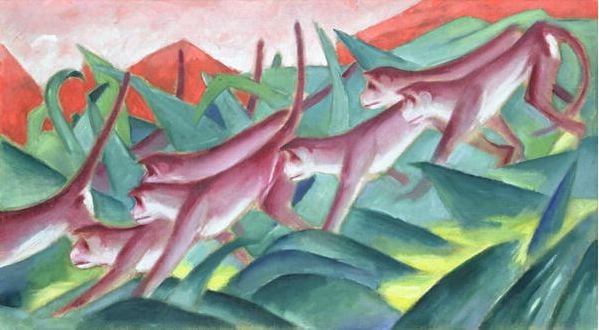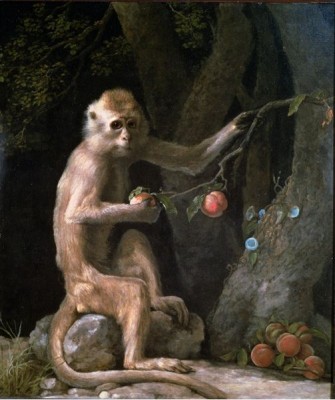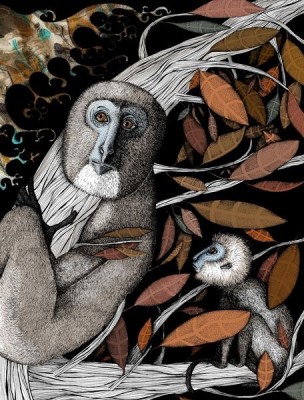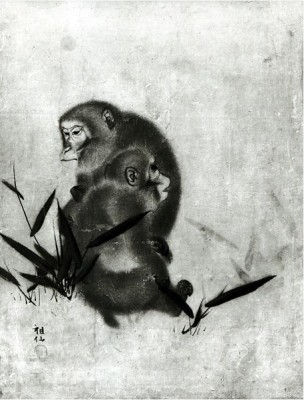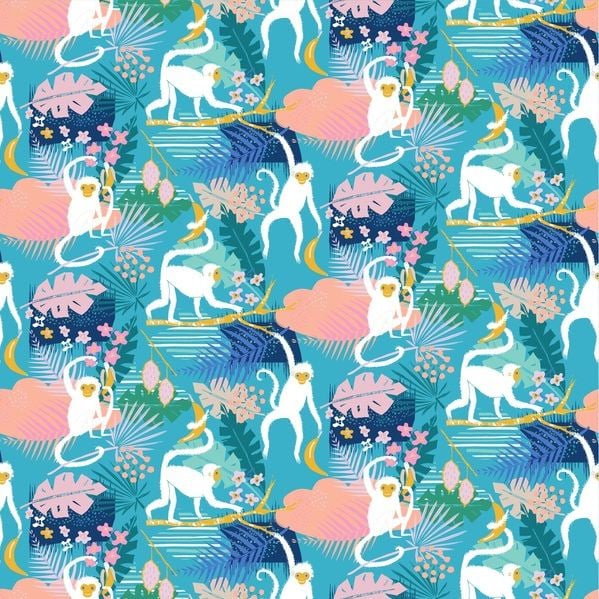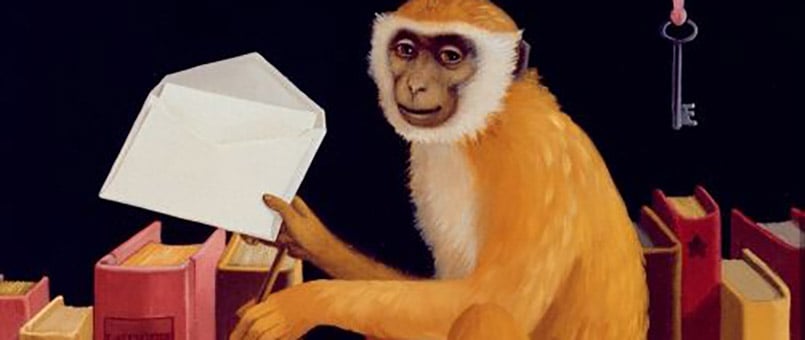
Chinese New Year 2016: The Monkey in Art and Culture
Being half Asian, I am lucky enough to celebrate two New Years. Chinese New Year is the far more cultural of the two, filled with traditions that go back centuries.
The coming Chinese New Year will begin on the 8th February and will honour the Zodiac of the monkey – my own personal sign. Specifically, 2016 will be the year of the Fire Monkey, the most active and aggressive of the species’ element pairings.
Known for its sharp wit, curious nature and mischievous personality, this practical joker is a great addition to any design. Here are some of the best depictions of the furry creature, alongside some cultural facts that may surprise you:
Monkey Frieze, 1911, Franz Marc / Hamburger Kunsthalle, Hamburg, Germany / Bridgeman Images
For over two thousand years monkeys have had a significant role in Chinese culture. In Asian art the earliest ape-shaped objects were believed to have been belt hooks, dating from the late Eastern Zhou period. The oldest extant painting of a monkey is attributed to the Buddhist monk and artist Guanxiu (832-912) and shows a gibbon offering peaches to a spiritually enlightened person.
There is also of course the famous ‘three wise monkeys‘, which derives from Japanese culture.
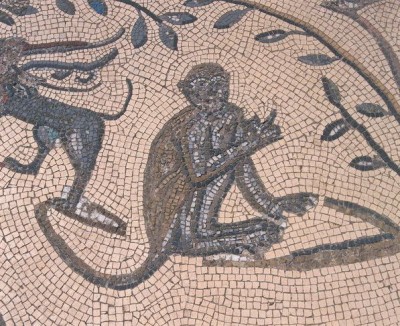
Morocco, North of Meknes, Volubilis, House of Orpheus, mosaic with Orpheus surrounded by animals, detail of a monkey, Roman Empire from 1st century ad / De Agostini Picture Library / G. Dagli Orti / Bridgeman Images
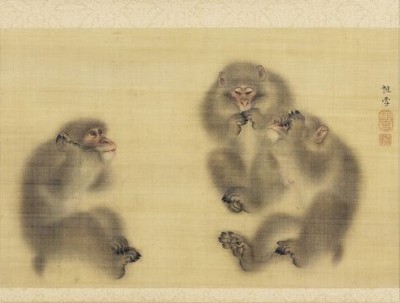
Monkeys: Hear No Evil, See No Evil, Speak No Evil, c.1820, Mori Sosetsu / Indianapolis Museum of Art, USA / Caroline Marmon Fesler Fund / Bridgeman Images
In addition to their recurrences in the visual arts, there is the renowned Monkey King from the 16th century classic novel Journey to the West and its subsequent Monkey King Festival. There is even a special type of martial arts called Monkey Kung Fu.
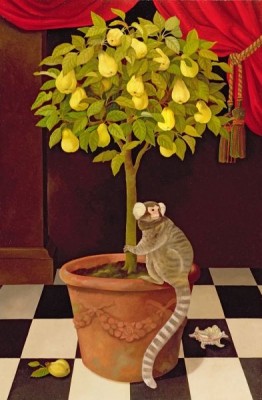
Marmoset and Quince Tree, Lizzie Riches (b.1950) / Private Collection / © Portal Painters / Bridgeman Images
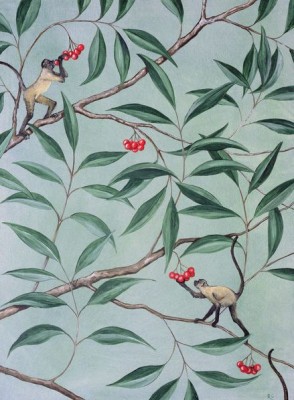
Tasting, Rebecca Campbell / Private Collection / Courtesy of Jonathan Cooper, Park Walk Gallery, London / Bridgeman Images
Monkeys are often depicted in art and literature alongside fruit, especially peaches, which can either symbolise a long and healthy life or immortality. Indeed, the ‘Peaches of Immortality’ are a major item within the fantasy of Journey to the West.
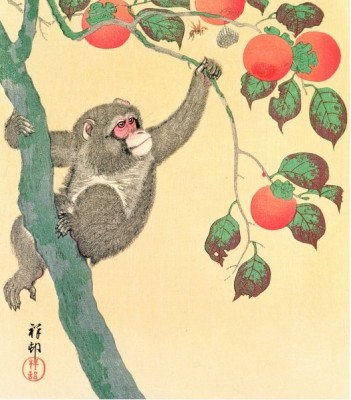
monkey-persimmon-tree-ohara-kosonMonkey in a Persimmon Tree, 1935 (woodblock colour print), Ohara Koson / © UCL Art Museum, University College London, UK / Bridgeman Images
Gibbons and macaques were particularly popular images in Chinese poetry. The scholar Robert Van Gulik stated that almost every Chinese poet who wrote from the 3rd – 7th centuries referred to the ‘graceful movements of the gibbon and his saddening calls’.
The animal was so beloved that it was sometimes kept in a domestic setting – pet monkeys in China date as far back as 771 BCE. Old Huainanzi text recalls how ‘the king of Chu lost his [pet] ape, and [to recapture it] he destroyed every tree in the forest’.
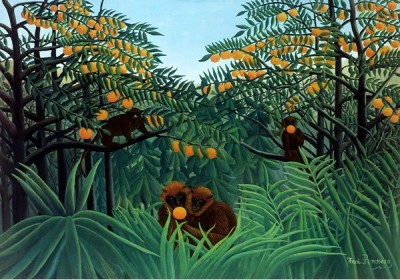
Monkeys in the Jungle, 1910, Henri J.F. Rousseau (Le Douanier) (1844-1910) / Private Collection / Bridgeman Images
Early Asian scripts refer to mythical monkeys, or creatures that resembled them. The ancient pictograph for the word meaning ‘monkey’ was almost identical to one symbolising ‘a legendary demon with a human face and body of a monkey/dragon’. There was also supposedly a ‘mountain imp’ that had a person’s face with a monkey’s body.
For the most part, these mythological monkeys were not the friendly kind – some were believed to abduct and rape humans while the ‘water monkey’ was thought to like drowning people… you probably wouldn’t want to keep this variety as a pet!
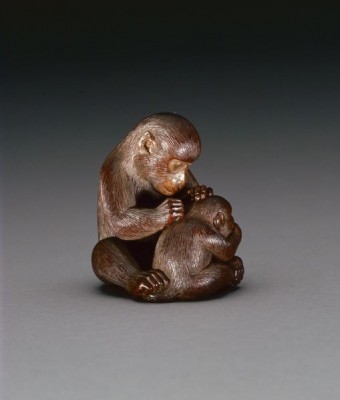
Netsuke depicting a mother monkey and her son, c.1880-1900 (for reverse see 208393), Suzuki Tokuku / Private Collection / Paul Freeman / Bridgeman Images
Comparably, Chinese religions used apes as metaphors for people and some shape-shifting monkeys were said to be human ancestors – perhaps a suggestion of early Darwinism. Their qualities varied according to different beliefs; in Daoism gibbons had a transcendent longevity or immortality, while in Buddhism they symbolised restlessness and foolishness.
Unfortunately, monkey meat was also a medicine and delicacy in Chinese cuisine. Qing dynasty emperors were partial to snacking on raw monkey brains!
Need more monkey business? Check out these clips
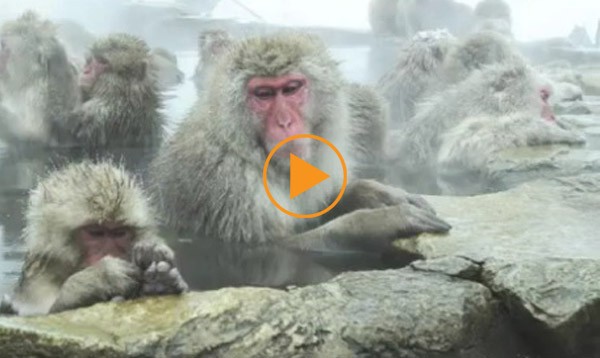
The Japanese Macaque (Snow) Monkeys enjoying a bath in the Onsen of Jigokudani Yaenkoen , Nagano Prefecture / Bridgeman Footage
Sources
An, Liu (2010), The Huainanzi: A Guide to the Theory and Practice of Government in Early Han China, by Liu An, King of Huainan. New York: Columbia University Press
Chen, Stephen (2007), “Wild monkeys hunted for food and medicine for centuries on mainland,” South China Morning Post, 9 July 2007
Eberhard, Wolfram (2003), A Dictionary of Chinese Symbols: Hidden Symbols in Chinese Life and Thought, Routledge
Van Gulik, Robert (1967), The gibbon in China: An essay in Chinese animal lore, E. J. Brill
Yang, Lihui, et al. (2005). Handbook of Chinese Mythology. New York: Oxford University Press
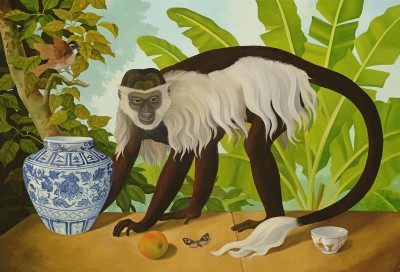
Colobus Monkey, Lizzie Riches (b.1950) / Private Collection / © Portal Painters / Bridgeman Images
Images and Licensing
View more monkey images. Get in touch at uksales@bridgemanimages.com for more information on licensing images and clearing copyright.

